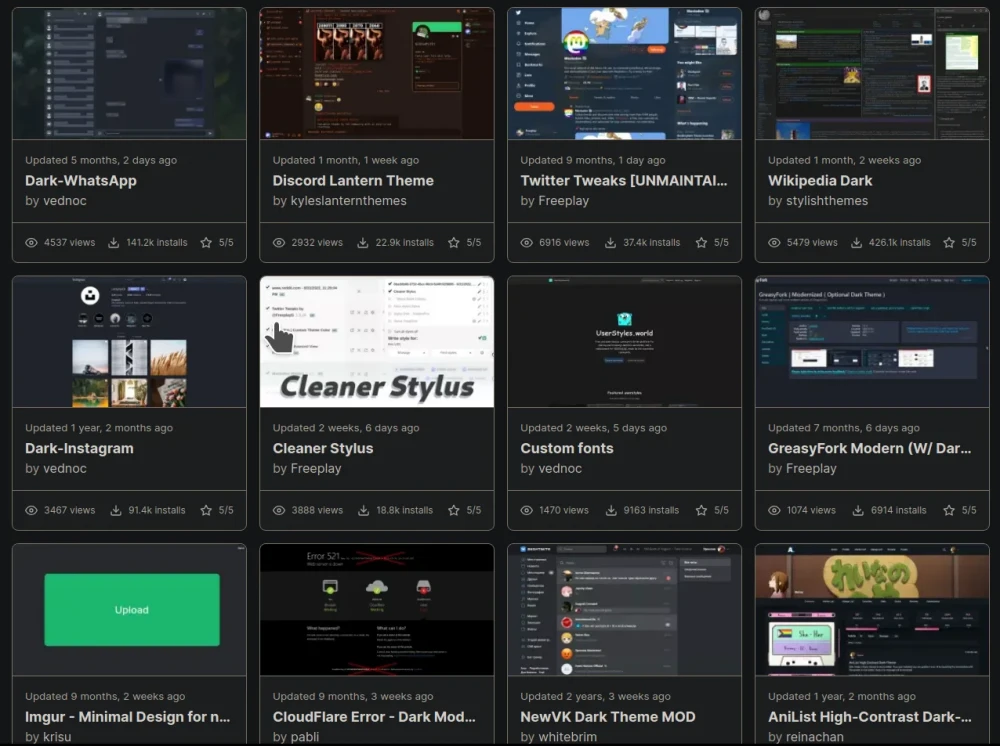Stylus injects its own CSS into targeted pages and therefore makes you able to override the present design of a webpage. If you know CSS, you can write and create your own styles. Otherwise, you can just install styles by other authors from userstyles.org (USO). You can also search for styles for the current site on USO from within the Stylus extension.
Stylus browser extension is available for Chrome, Firefox and Opera desktop browsers. Note that Stylus is a fork of the Stylish extension. I tried initially to install Stylish, but once it said it wanted to track every single website I visited, it was quickly deleted. Stylus is privacy respecting and open-source software. Not “ish”, but “us”, as in “us” the actual users, is how Stylus terms it. The extension is being actively maintained and updated.
What I like about Stylus is that you just go to any website and then click on the extension icon for it to quickly search and show you if there are some styles for it (there is no download, save, then import). It is also pretty easy to extend a style by editing it, and you have a choice of your own cloud services you can sync it to (I use two different browsers, so this works to sync the styles between them). It also has an automatic update for the styles.
I see numerous sites are supported such as Facebook, Gmail, YouTube, Discord, Lemmy, Mastodon, X, Wikipedia, LinkedIn, MeWe, and many more. I discovered this extension when I was looking for something to dynamically resize the column widths for the Mastodon site.

